
Lot 205
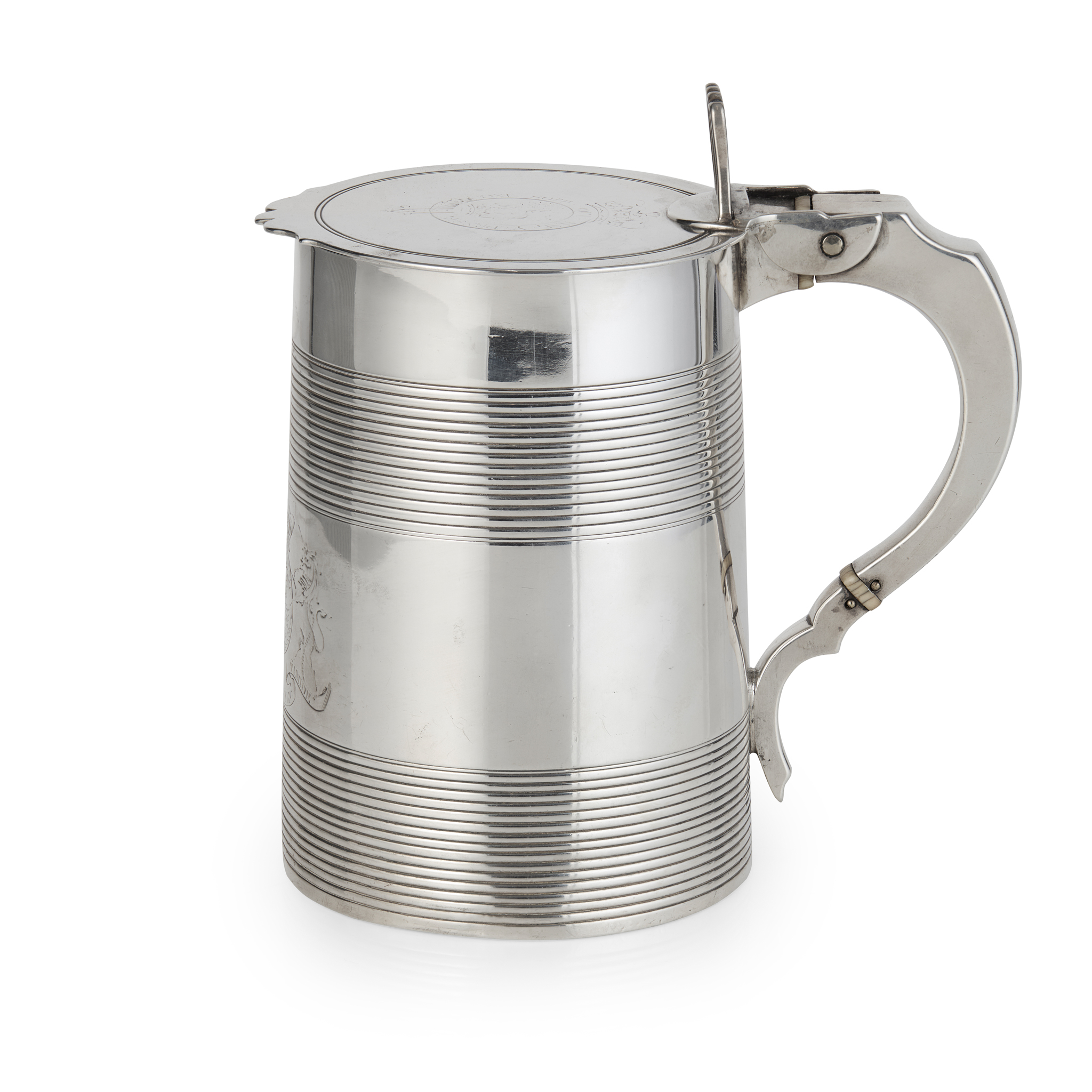
THE DUKE OF CLARENCE AND ST. ANDREWS GEORGE III SILVER TANKARD Y
EDWARD FERNELL, LONDON
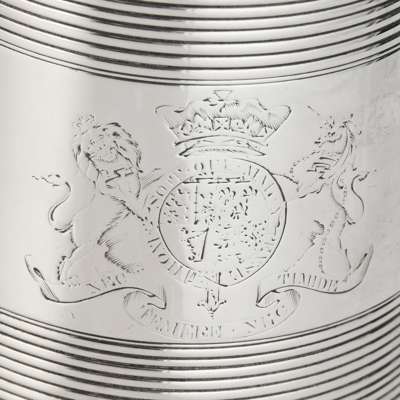
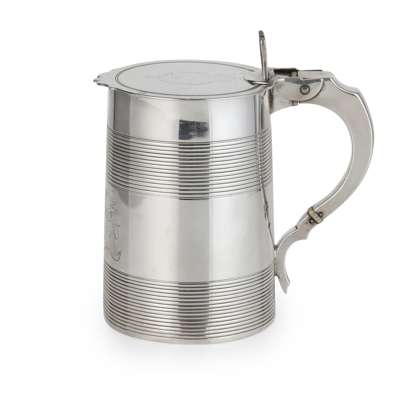
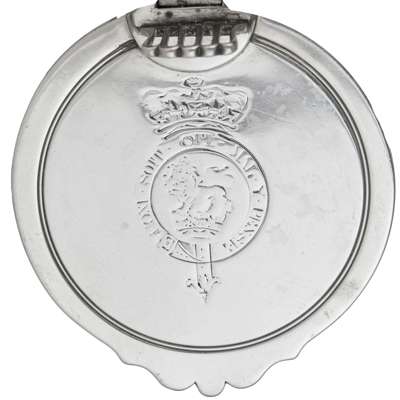
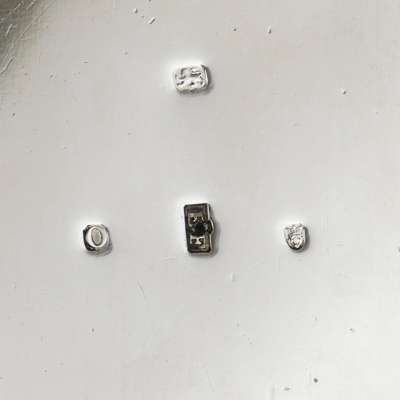
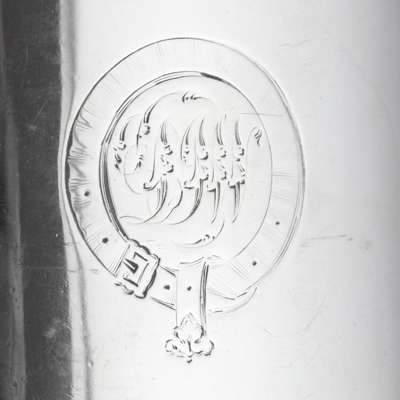
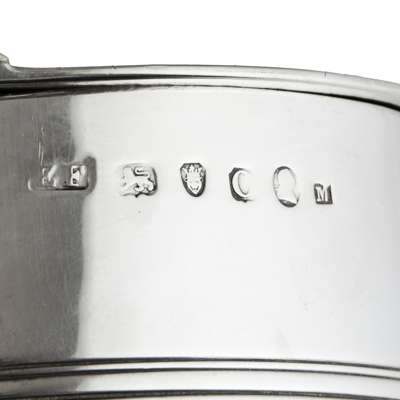


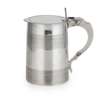
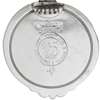
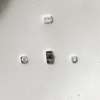
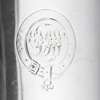
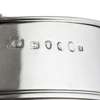
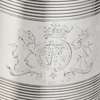
Auction: Day One, Other Properties | Wed 3rd Sept at 10am | Lots 171 to 402
Description
of slightly tapering form, with reeded decoration, engraved Royal Coat of arms and cypher within garter engraved to the body, the flat hinged cover engraved with Royal coronet above motto within garter, for HRH Prince William, Duke of Clarence and St. Andrews, later King William IV of the United Kingdom of Great Britain and Ireland and the King of Hanover, plain S-scroll handle with pierced thumb piece and ivory insulators
Dimensions
19cm high, 29.5oz
Footnote
Edward Farrell, first entered his mark as a plateworker in 1813 as there is no evidence of an apprenticeship of freedom granted.
He eventually established himself as one of the most renowned silversmiths of the Regency period, particularly in the Rococo Revival and the Revivalist style. The Revivalist style particularly focused on pieces from the past and reproducing them. A significant Monteith Gilbert.852:1, 2-2008 held in the Sir Arthur and Rosalinde Gilbert collection within the V & A museum exemplifies this, the scene on the bowl depicts an ancient battle, described as "Alexander the Great's battle of the Granicus". Hallmarked for 1820-21, this piece shows how quickly Farrell ascended and honed his craft.
Farrell’s success was facilitated further due to his relationship with the retailer Kensington Lewis, who was also very interested in presenting historical items to the market. Kensington Lewis’s main patron was H.R.H Prince Frederick Augustus, Duke of York, (1763 – 1827), the brother of the Prince Regent, who would go onto become King George IV. As the spare, the Duke of York had a very successful military career and consequently was able to commission impressive pieces of silverware. The Museum of Fine Arts Boston holds two salts in their collection 1989.313, each engraved with the Royal crest with the Garter motto and surmounted by a Royal ducal coronet, for the Duke of York.
The armorial bearings on this tankard were granted in 1791 to William Henry, the third son of George III and his wife, Princess Sophia Charlotte of Mecklenburg-Strelitz. He was born on the 21st August 1765 and succeeded to the throne upon the death of his eldest brother, George IV on the 26th June 1830. William was subsequently crowned at Westminster Abbey on the 8th September 1831. He died on the 20th June 1837 and was buried at Windsor. William was created Duke of Clarence and St Andrews and Earl of Munster on the 16th May 1789. He married Princess Adelaide Louise Theresa Caroline Amelia, daughter of George I, the reigning Duke of Saxe-Meiningen on the 11th July 1818. As William had no legitimate issue from this marriage, he was succeeded upon his death as Sovereign of the United Kingdom of Great Britain and Ireland by his niece, Victoria, whilst owing to Salic Law, the Kingdom of Hanover passed to Ernest Augustus, the Duke of Cumberland, the eldest surviving son of King George III.
The fact that both the Duke of York and the future King William IV both were patrons of Edward Farrell is a true testament to the quality of his workmanship and the fashion of the day.
Heraldry:
Arms: Quarterly 1st Per pale dexter Gules three lions passant guardant or (for England) sinister Or a lion rampant within a double tressure flory counterflory gules (for Scotland) 2nd Azure three fleurs-de-lys (for France) 3rd Azure a harp or (for Ireland) 4th Tierced per pale and per chevron 1st Gules two lions passant guardant or (or Brunswick) 2nd Or semy of hearts gules a lion rampant azure (for Luneburg) and 3rd Gules a horse courant argent (for Hanover). The arms are encircled by the Garter and ensigned with the coronet of the son of Sovereign as a Prince of the United Kingdom.
Supporters: (Dexter) A lion guardant or crowned with coronet of a Prince of the United Kingdom
(Sinister) A unicorn argent armed unguled and crined or gorged with a coronet of a Prince of the United Kingdom and attached thereto a chain reflexed over the back also gold
Each supporter is also charged with the label of three points as found on the arms under the manes of the beasts.
Motto: Nec temere nec timide [Neither rashly nor timidly]
This motto was also used by the Prince’s/King’s illegitimate son, the Earl of Munster (1831 creation) and the earl’s descendants.
Secondary Engraving: A strap and buckle environing an unidentified monogram.
Please be aware that this lot contains material which may be subject to import/export restrictions, especially outside the EU, due to CITES regulations. Please note it is the buyer's sole responsibility to obtain any relevant export or import licence. For more information visit http://www.defra.gov.uk/ahvla-en/imports-exports/cites/
Sold in compliance with UK Government and APHA regulations, with (non-transferable) exemption registration reference H6AMKQLB













